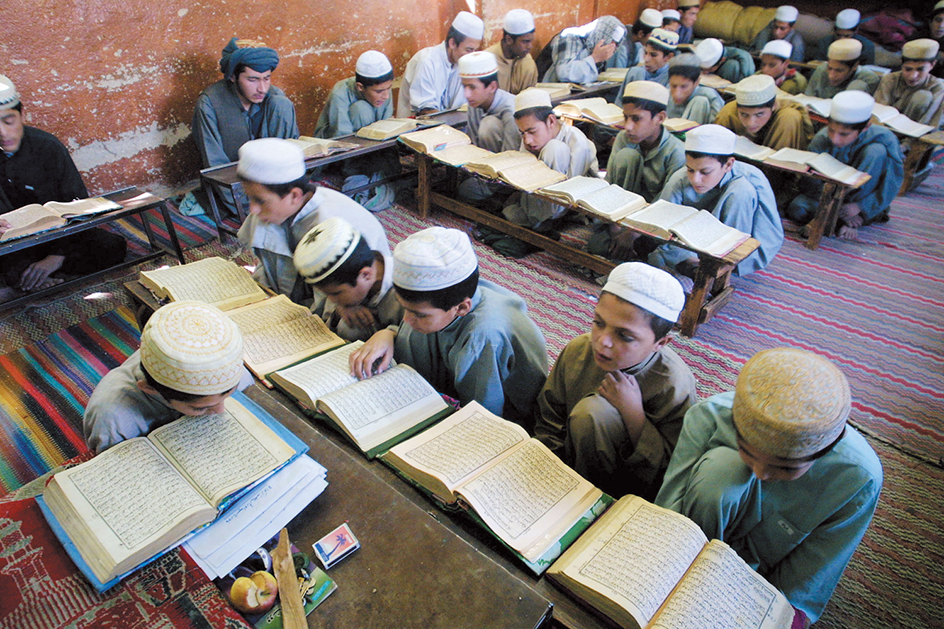Madrasah, << muh DRAS uh, >> is an Islamic school for the advanced study of religious law. Madrasahs focus on helping Muslim students understand the teachings of the Qur’ān and how to apply those teachings to everyday life. They offer courses in such areas as Arabic grammar, analytical thinking, Qur’ān recitation and interpretation, and the traditions of the Prophet Muhammad. Many graduates of madrasahs become religious judges, mosque leaders, and teachers.

Most madrasahs consist of a building of classrooms and student dormitories surrounding a courtyard. But a madrasah may also take the form of a teaching room attached to a mosque. Traditionally, madrasahs were established by private individuals who set aside money or property for scholarships and the payment of teachers. But since the 1900’s, madrasahs in many countries have been funded fully or partially by governments.
Madrasahs originated in the A.D. 1000’s in Iran and Mesopotamia (now mostly Iraq). The schools eventually spread to northern Africa, India, Southeast Asia, and other parts of the Islamic world. Beginning in the 1800’s, the popularity of madrasahs decreased, as many Muslims turned to secular (nonreligious) forms of education. But since the 1970’s, some Middle Eastern countries have experienced a revival of madrasah education because of a renewed interest in Islam. Two of the most influential madrasahs in the Islamic world are al-Azhar in Cairo, Egypt, and al-Qarawīyīn in Fez (also spelled Fès), Morocco.
